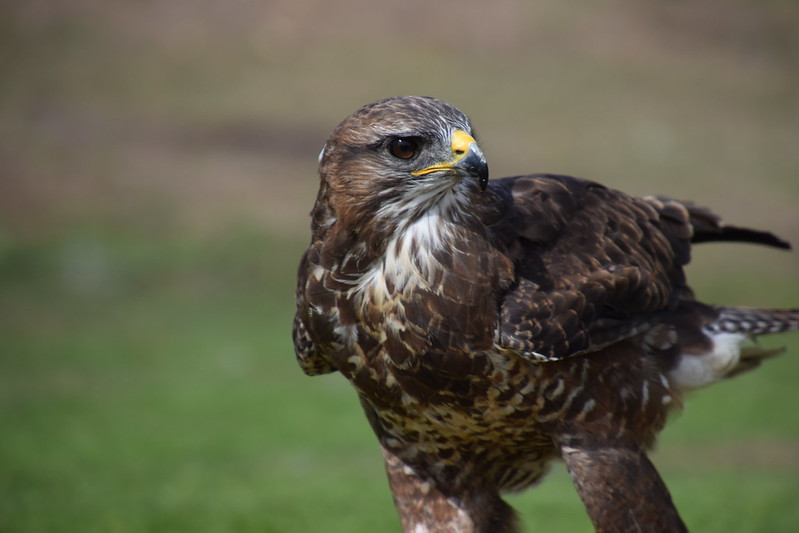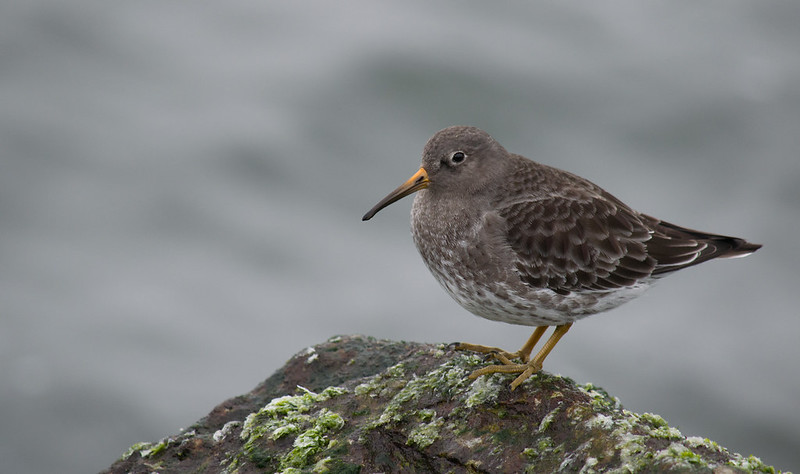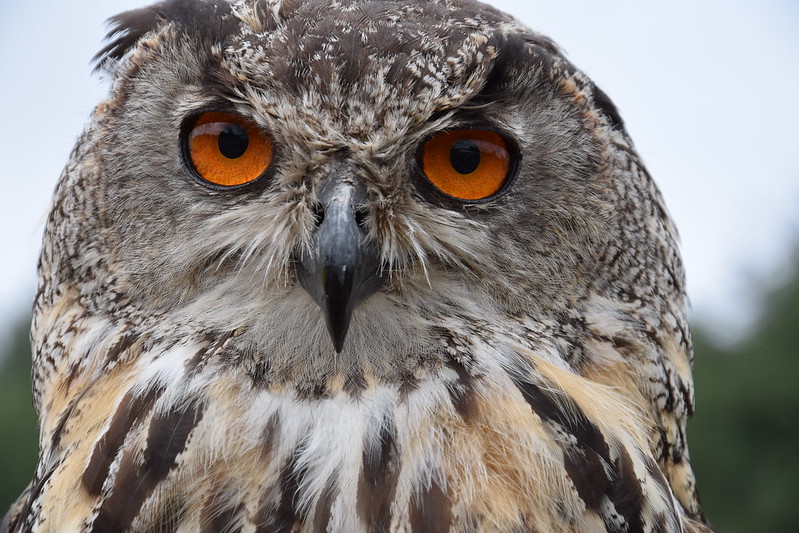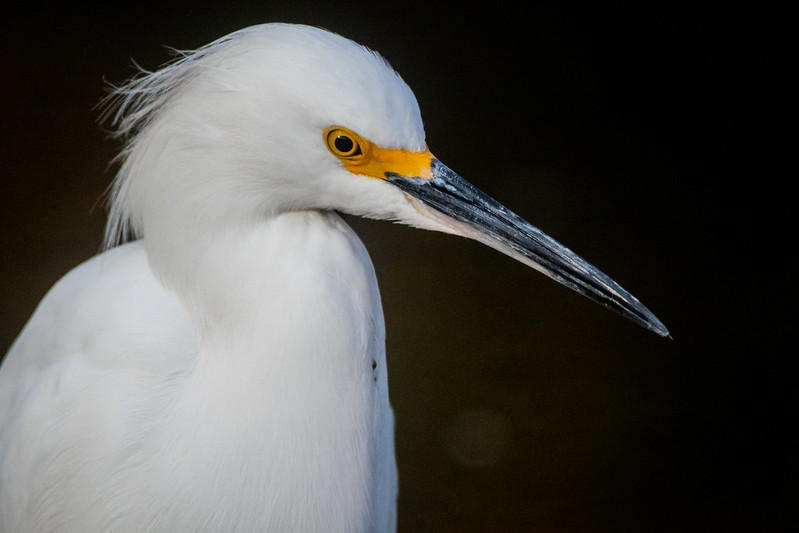All images seen on this page have been photographed with either a Nikon D3300 or Nikon D3400.
The majority of bird and wildlife photographers would probably laugh at the thought of using a cheap, entry level DSLR camera.
Speaking on the Nikon side of things, their entry level cameras are often not thought of as appealing for people who have been doing photography for some time, let alone for one of the most challenging types of photography: birds.
That was until the D3300 came along containing one of Nikon’s best cropped image sensors – the 24MP DX.
This sensor contains no anti-aliasing (AA or optical low pass) filter, resulting in photos that are simply stunningly sharp straight out of camera.
While high end 24MP bodies like the D7200 are a better camera overall because of their more advanced features, the D3300 and D3400 give you equal image quality for a lower cost.
The D3500 is the latest entry level release, also containing the 24MP sensor. With mirrorless on the rise, the D3500 could be the last entry level DSLR of this type that we see.
Brand new, these are not expensive cameras as far as DSLR’s go. But they can also be purchased lightly used on eBay (under 10,000 shutter count) often for well under $300 – often with a nice 18-55 lens included!
This is a bargain for what you get. You can almost think of buying a new camera like buying a new car that loses value the minute it’s driven out of the showroom, so too does a new camera body lose value when it’s taken out of the box (although not by as much as a car). Nothing wrong with buying brand new though, and you get the peace of mind and warranty that comes with it. It all comes down to how much money you have to spend.
Some people buy a camera with great intention of using it, then soon change their mind. With the entry level cameras these are often beginner photographers who decide they’re just going to stick with their iPhone instead, or who just purchased it to take on one vacation and up goes the virtually brand new camera on to eBay at a discounted price.
As with any DSLR, the lens attached to it is going to make all the difference. Put a low quality telephoto lens on to one of these cameras and the results will be disappointing. This then causes inexperienced users to blame the camera and not the lens or their own ability!
Top class optics will make these cameras shine, and no they don’t come cheap generally, but there are many more affordable high quality lens options for bird photographers right now than there ever has been.
Being a low cost starter camera, there are naturally going to be some disadvantages to the D3300 and D3400. But these will depend on your expectations, experience and your wants and needs in a camera.
For camera bodies in this price range, many compromises are clearly going to be made versus using a higher end body. That’s to be expected.
Autofocus and overall camera options are the big ones. When one uses a camera in manual exposure mode, as it can be a good idea to do with bird photography, the auto exposure options of a camera body are not so important.
The D3xxx come with many preset scene modes which are of little to no use to intermediate and advanced users. These can be safely ignored, instead putting the dial on M for manual as you can with any other camera body, set the custom ISO button and you have shutter speed, aperture (this will be a two-step process rather than turning one dial as there is no front dial) and ISO at your fingertips.
No need to dive into menus. So while it’s not as fast as using a higher end body, taking complete control over the exposure is simple with the D3300 and D3400 and ultimately that’s what will get you the best results.
There are naturally going to be pros and cons of using a simple, beginner type camera like these. For example:
Disadvantages:
- Only 11 autofocus points and one central cross-type focus point sensor
- Small body – Ok for small hands but big hands may fumble
- Lower quality build and no weather sealing – not suitable for rain or extreme weather conditions
- 5 frames per second
- Shorter rated shutter life than higher end cameras (that doesn’t mean it won’t keep going well beyond that)
- No top LCD screen or front command dial
Benefits of the Nikon D3300 and D3400
- Very high image quality
- Very small and light
- Inexpensive (more money to spend on a lens)
- 5 frames per second (hmm wasn’t that a con? Actually for such a cheap camera, this is hardly a bad frame rate).
- Full HD video
There are the trade-offs to be had when choosing a D3300 or D3400 (or the latest D3500) for bird photography, but if image quality is a top priority and the budget is low – money is better off being put into quality lenses – you can not go wrong either starting out with bird photography using one of these cameras or just adding it as a very light weight option.
While these will never be high speed bodies for the fastest action, they can still be used for very good results for birds in flight, as well as in low light environments. The autofocus performance is more than satisfactory when the cost of the cameras and image quality benefits are considered.
Photography is often about trade-offs and compromise when you can’t buy the best of the best, and many people will find that the benefits far outweigh any negatives of these fantastic little cameras. If not used as a main camera body, they can make an awesome little back up, second body or video body that takes up almost no space in the bag.
Bird Photography Lenses for D3300 and D3400
So which lenses work well with the D3300 and D3400 for bird photography?
The answer is simple: the same lenses that work well for bird photograpy on any other Nikon DSLR camera!
Yes, when you put a large telephoto on a tiny camera it might feel a little unbalanced at first but you might soon come to appreciate the lighter weight.
Here are some tips for the best bird lenses for the D3400 and D3300:
- Nikon AF-P 70-300mm f/4.5-6.3G DX ED VR (do not bother with the older 70-300mm or the non-VR version).
- Nikon 200-500mm f/5.6E ED VR
- Nikon 300mm f/4E PF ED VR
- Tamron 150-600mm f/5-6.3 Di VC
All of these lenses will perform exceptionally well on the D3300 and D3400 and they cover the entire price spectrum, so there is something for everyone.
Nikon AF-P 70-300mm VR DX
The AF-P DX 70-300mm VR came to be one of the biggest surprises from Nikon in recent years. When the cost of this new lens was announced, it was expected to be a mediocre, low optical quality kit type lens that no serious photographer would want to touch.
After all that’s how it’s always worked: cheap lens = cheap optics.
But Nikon has challenged this several times in recent years including with this remarkable little lens. While 300mm is more often than not too short a focal length for birds, unless you can get very close with tame birds at a lake for example, it still has its uses.
This is a great home garden lens and the results are tack sharp if you can nail that image. In fact you can easily use this lens and look at the photos and be forgiven for thinking they were taken with a much more expensive prime lens – it really is that good.
It’s a very sharp lens capable of high quality images on these 24mp sensor cameras. With the excellent cropping ability available on these sensors, there is some room to move if you can’t fill the frame as much as you’d like to at 300mm – that doesn’t mean large crops are ideal, they are not. But in the worst case scenario, you can still achieve really good quality photos with this lens even if you are cropping more than 50% of the frame out (with good technique, of course). This is a lens that can get anyone started in bird photography without outlaying a lot of money.
Just make sure you get the VR and the DX version of the 70-300mm AF-P lens as Nikon released a number of versions of this lens, including a cheaper non-VR kit lens and a more expensive full frame FX version.
Nikon 200-500mm f/5.6E ED VR
Another lens that was announced in 2015 with a low price tag and once again, expectations were not high. Was this going to be a budget telephoto with substandard image quality that no self respecting wildlife photographer would go near?
Once again that wasn’t to be the case. Some of the early photos coming from this lens looked like those from $9000 telephoto prime.
The autofocus speed isn’t in the same league as a big prime nor is the build quality (it is a solid lens though), but with many thousands of dollars seperating this lens from the top of the range telephotos the downsides aren’t on the radar because of the image quality the 200-500 is capable of.
The low cost comes with the compromise of this being a heavy lens (2.3kg) without the expensive weight reduction technology seen in other modern Nikon lenses. But again it all comes down to price. Nikon had to start competing with the budget telephoto zoom options from Tamron and Sigma.
We can’t all afford nor want to outlay five figures on photography gear. This lens is hands down the best and cheapest 500mm option for a Nikon DSLR if you don’t mind the size of it.
Nikon 300mm f/4E PF ED VR
This is not a budget lens but it is still well worth including here.
This was the long awaited replacement of the classic old D version of the 300mm f/4 which was such a fantastic lens, however that old one had no VR (vibration reduction) so while it was great for birds in flight where higher shutter speeds are used, it wasn’t ideal for birds in low light or where shutter speeds dipped to 1/500 or slower.
The new PF version fixes that and is a top notch lens in every way – it’s amazingly small and light compared to the old beast and the image quality is about as good as it should be for a prime tele lens. This is lens that can be carried anywhere without being a burden, and even more so on the lightweight D3300/D3400/D3500 bodies.
Many users will want to have the 1.4x teleconverter permanently attached to this lens because 300mm is rarely enough focal length for birds. There is no AF fine tune function on the D3xxx series of cameras, but you should still certainly be able to get excellent results with the 300PF and 1.4x TC combo.
If you haven’t used a prime lens/fixed focal length lens before, it can take some getting used to. You can’t zoom out. You move with your feet or you frame the image more creatively.
These cameras are not equipped with super duper autofocus systems, so when adding a teleconverter it can be ideal to try and stick to the centre AF point to ensure focus is obtained (this is the one and only cross-type focus point in these cameras which has a greater ability to focus). The surrounding points will still work in good light or higher contrast scenes, but for best results in lower light stick to the center point to ensure focus is obtained. Using the lens without a TC gives you free reign to move the AF points around as much as you want, giving you more scope for composing images.
Tamron 150-600mm f/5-6.3 Di VC
There are two versions of this lens to choose from: the original, and the latest release labeled as the G2. The initial version of the Tamron 150-600 still comes highly regarded; it’s a solid lens capable of great image quality. It does generally need to be stopped down as close to f/8 as possible for maximum sharpness, and this can be a negative for some people. If you mostly shoot in low light environments you might not put this lens (or any of the third party superzooms for that matter) at the top of your wish list. But for general bird photography, either the G1 or G2 Tamron is going to produce pleasing results once you’re comfortable in using a large telephoto lens. The vibration control is excellent on both Tamron lenses. The G2 comes with better build quality and extra advancements that you’d expect to see over the older version. But if your budget is limited, there’s almost always someone selling a G1 Tamron 150-600 if you’re comfortable purchasing used. But at under $1200USD brand new, the latest Tamron 150-600mm G2 lens is as good a bargain as you’ll get for excellent optics and performance.
It’s simple: having a relatively low budget and wanting a DSLR for bird and wildlife photographing no longer means compromising on image quality or spending insane amounts of money (though there’s nothing wrong with that if you can do it).
A D3300, D3400, or D3500 used with a lens like the ultra cheap but amazing little AF-P 70-300 VR, combined with realistic expectations and knowledge of how to capture quality images at 300mm, will not disappoint. If the budget can be stretched further, longer focal length telephoto lenses like the Nikon 200-500mm, Tamron 150-600mm or Sigma 150-600mm will, with practice and good technique, allow you to capture bird and wildlife photos that are exceptional, for under $2000 or much less if you can do your due diligence and buy on the used market.




